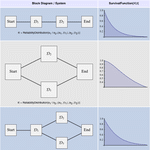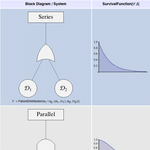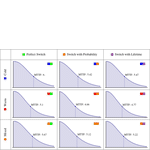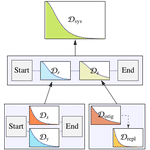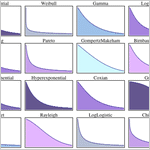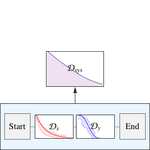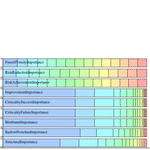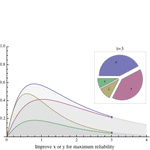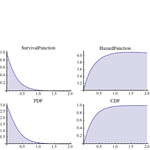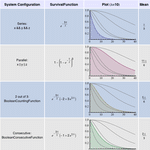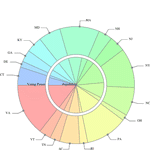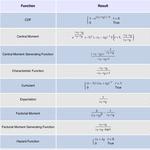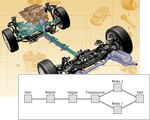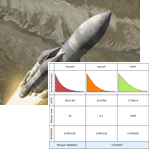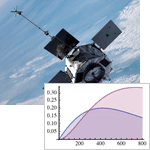New in Mathematica 9
Reliability
Mathematica 9 adds complete functionality for reliability analysis to its already powerful probability and statistics capabilities. All common system structures such as series, parallel,  -out-of-
-out-of- , and consecutive
, and consecutive  -out-of-
-out-of- , as well as general configurations, can be analyzed with symbolic and numeric methods. Warm, cold, and mixed standby systems are supported. A full suite of importance measures helps pinpoint the most important subsystems to improve for increased system reliability. The related survival analysis capabilities provide component models from censored data as would typically be the result from field tests or accelerated tests.
, as well as general configurations, can be analyzed with symbolic and numeric methods. Warm, cold, and mixed standby systems are supported. A full suite of importance measures helps pinpoint the most important subsystems to improve for increased system reliability. The related survival analysis capabilities provide component models from censored data as would typically be the result from field tests or accelerated tests.

- All common parametric lifetime distributions (exponential, Weibull, Erlang, hypoexponential, ...).
- Support for nonparametric, derived, and formula lifetime distributions.
- Support for series, parallel,
 -out-of-
-out-of- , consecutive
, consecutive  -out-of-
-out-of- , and general structure.
, and general structure. - Reliability block diagram-based system models. »
- Fault tree-based system models. »
- Complete list of standby system models including cold, warm, and mixed standby systems with perfect or imperfect switching. »
- Support for hierarchical modeling of reliability systems combining reliability block diagrams, fault trees, and standby systems at different levels.
- Symbolic and numeric computation of any properties such as reliability function, hazard rate, or mean time to failure.
- Easily simulate any system.
- Full suite of importance measures, including structural, Birnbaum, and improvement importance.
- Full suite of survival analysis capabilities, including estimation from censored data and proportional hazards modeling.
